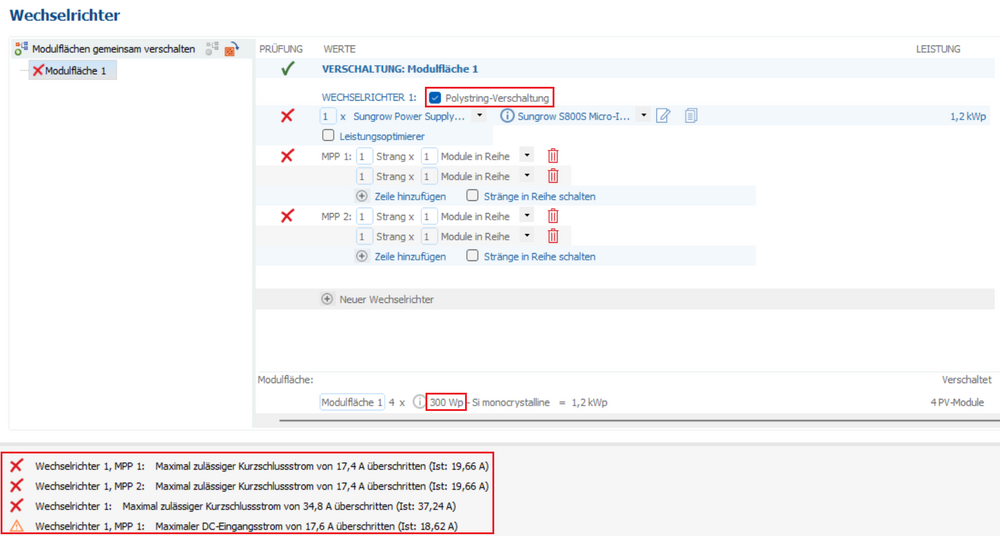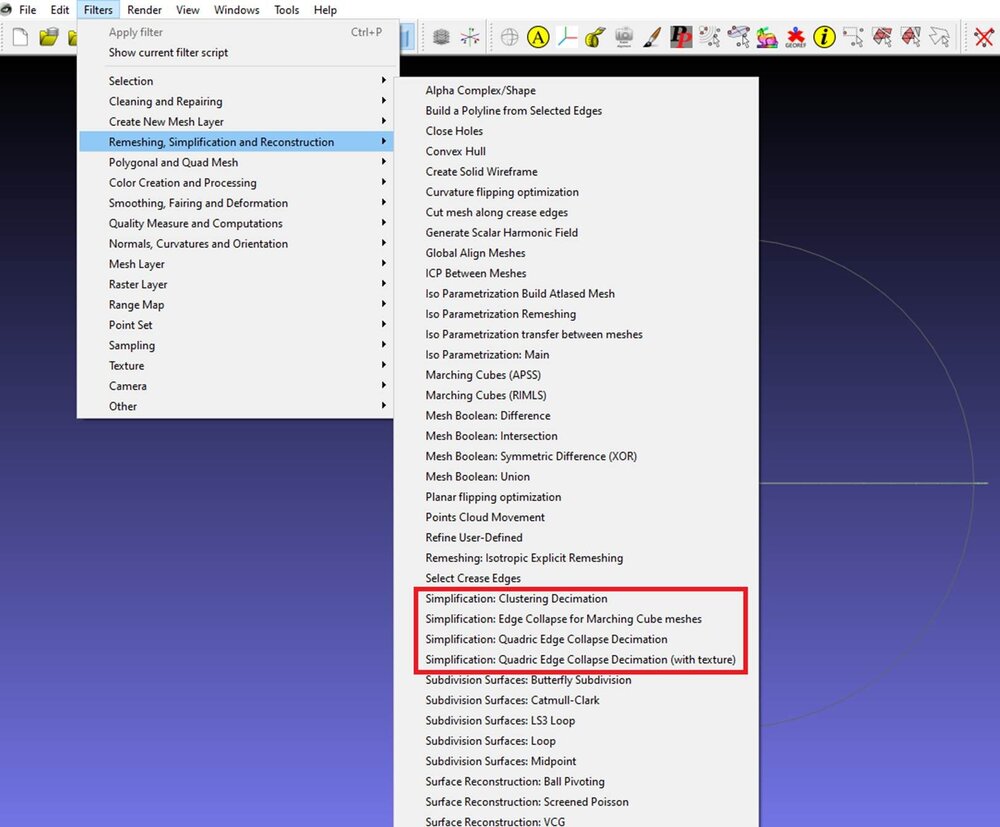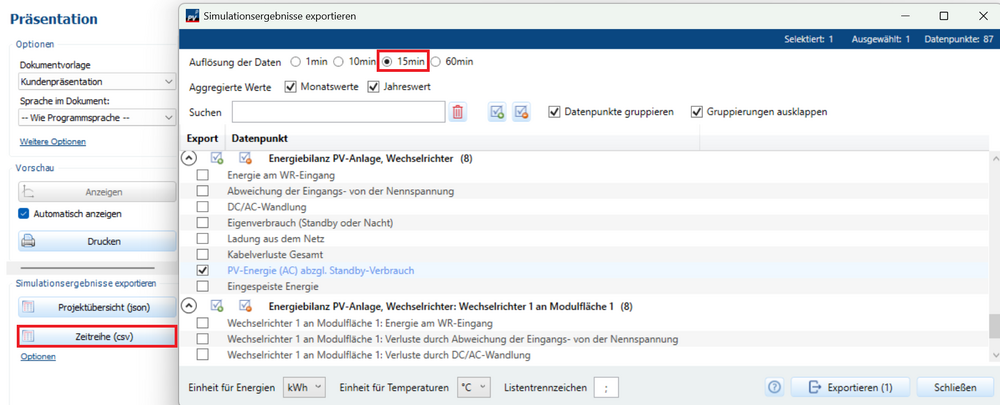-
Posts
430 -
Joined
-
Last visited
-
Days Won
25
Everything posted by hotline_oh
-

Neue Wechselrichter + Batterien hinzufügen
hotline_oh replied to Elektro und Technik's topic in PV*SOL
Sehr geehrter Herr Burian, vielen Dank für Ihre Anfrage. Bitte senden Sie uns die genauen Produktbezeichnungen oder die Datenblätter der fehlenden Produkte an hotline@valentin-software.com. Wir kontaktieren dann den Hersteller oder legen die Datensätze selbst an. Das Datenbank-Update erfolgt alle 14 Tage, das nächste findet voraussichtlich am 16. Januar 2026 statt. -
Sehr geehrter Herr Yavuz, vielen Dank für Ihre Anfrage. Die Leerlaufspannung des Solarmoduls unter STC-Bedingungen (25 °C) beträgt laut Datenblatt 53,8 V. Die maximale Leerlaufspannung wird für -10 °C berechnet. Der Temperaturkoeffizient der Spannung beträgt laut Datenblatt -0,24 %/K bzw. -129,12 mV/K. Die Temperaturdifferenz von +25 °C bis -10 °C beträgt 35 Kelvin. Dieser Temperaturunterschied führt zu einer Spannungserhöhung von 35 K * 0,129 V/K = 4,52 V. Es ergibt sich demnach eine maximale Leerlaufspannung von 53,8 V + 35 K * 0,129 V/K = 58,32 V. In PV*SOL wird die Leerlaufspannung bei -10 °C allerdings nicht allein anhand des Temperaturkoeffizienten, sondern anhand der Kennlinien bestimmt. Da für das Modul Trina TSM-460 NEG9R.28 Vertex S+ das Standard-Schwachlichtverhalten verwendet wird, wird eine geringfügig höhere maximale Leerlaufspannung von 60,1 V ausgegeben.
-
Hallo alxm, vielen Dank für deine Anfrage. Ja, die Begrenzung der Einspeisung auf 800 W gibst du in den Optionen an. Für die andere Variante kannst du unter Umständen die Polystring-Verschaltung nutzen. Allerdings bekommst du Probleme mit zu niedrigen Spannungen und zu hohen Strömen, wenn ein 0,8-kW-Wechselrichter eigentlich darauf ausgelegt ist, dass 2 Module in Reihe geschaltet werden. Welchen Wechselrichter und welche Module willst du verwenden? Beispielsweise kannst du den Sungrow S800S mit 4 x 200 Wp verschalten, nicht jedoch mit 4 x 300 Wp:
-
Dear dvd, Thank you for your inquiry. In our opinion, module cables are taken into account in the STC test. The module manufacturer or the testing institute that certified the module you are using can confirm this for you.
-

Where in PVSol can i set the DoD and the SoC ?
hotline_oh replied to Johan van t Wout's topic in PV*SOL
Dear Johan van t Wout, Thank you for your inquiry. Each battery system data set has a corresponding battery data set. Here you can enter or calculate the discharge cycles for different depths of discharge. The state of charge is a parameter that is output in the simulation results. -

MAX. Input Current in A , MAX short circuit current DC in A
hotline_oh replied to PETER SH's topic in PV*SOL
Dear PETER SH, Thank you for your inquiry. We confirm that you enter: Max. Input Current (A)=30 Max. Short-Circuit Current (A)=37.6 You can also send us the datasheet of the missing inverter. We will then contact the manufacturer and ask them to add the missing product to our database. -
Hallo Daniel Hagn, vielen Dank für deine Anfrage. Bei der Verwendung von 3D-Modellen sind folgende Besonderheiten zu beachten: Dateigröße sollte möglichst gering sein, maximal 250 MB. Höchstgrenze der Eckpunkte ist 500.000 (Empfehlung maximal 200.000 Punkte, um noch performant arbeiten zu können). Die Texturen sollten nicht mehr als 4096 x 4096 Pixel haben. Keine Lochstrukturen oder offene Strukturen in der Silhouette des 3D-Modells. Je höher die Komplexität des 3D-Modells, desto inperformanter ist PV*SOL, auch wenn z. B. die maximale Modulanzahl noch nicht ausgeschöpft ist. Es werden folgende Formate beim 3D-Modell-Import unterstützt: MeshLab wäre ein Programm, um das 3D-Modell zu reduzieren. Wir würden im ersten Schritt mit folgenden Werkzeugen arbeiten:
-
Hallo Gerald, vielen Dank für deine Anfrage. Wenn du auf der Seite "Anlagenart, Klima und Netz" den 1-Minuten-Zeitschritt für die Simulation auswählst, dann kannst du über die Exportfunktion auf der Seite "Präsentation" die Simulationsergebnisse im 15-Minuten-Intervall exportieren. Im Diagrammeditor stehen nur das 1min-Intervall oder das 1h-Intervall zur Verfügung.
-
Hallo Markus, vielen Dank für deine Anfrage. Ja, das ist leider ein Bug, der mit einem Update behoben werden muss. Was kannst du übergangsweise tun? Dupliziere den ersten Wechselrichter:
-
Guten Tag Ray-AET, der Hersteller hat den Datensatz der Batterie geändert. Das nächste Datenbank-Update ist für morgen, den 12.12.2025, geplant.
-
Dear Jake, Thank you for your inquiry. We will contact the manufacturer and ask them to add the missing products.
-
Dear J. Esteban, Thank you for your inquiry. Automatic cable dimensioning is only available for roof-parallel systems, not for elevated systems or systems with polystring connection. Since your system is very uniform and the module tables are mounted very flat, you would have the option of treating it like a rooftop system, i.e., creating a pitched roof with minimal height and the same number of modules with roof-parallel mounting, in order to be able to carry out the automatic cable dimensioning.
- 10 replies
-
- 1
-

-
- cable plan
- cabling
-
(and 1 more)
Tagged with:
-
Guten Tag Ray-AET, vielen Dank für Ihre Rückmeldung. Sie haben die Möglichkeit, den Datensatz der Batterie zu kopieren (Rechtsklick --> Kopieren) und neu abzuspeichern. Im neuen Datensatz können Sie Änderungen vornehmen. Anschließend müssen Sie auch den Datensatz für das Batteriesystem kopieren und im neu abgespeicherten Datensatz den neuen Batterie-Datensatz übernehmen.
-
Dear dls energy, Thank you for your inquiry. Please send the project file (*.pvprj) to hotline@valentin-software.com so that we can take a look at it.
-
Hallo Ray-AET, vielen Dank für deine Anfrage. Der Innenwiderstand und die Selbstentladung der Batterie bestimmen die Verluste, die durch Alterungsprozesse entstehen. Bei den beiden von dir verwendeten Batterien unterscheiden sich die Innenwiderstände deutlich. Es handelt sich um Hersteller-Angaben. Auf den meisten Batterie-Datenblättern wird der Innenwiderstand leider nicht angegeben. Alpha ESS Smile G3 3.8s B-Box Premium HVS+ 7.7 Weitere Informationen zur Berechnung findest du in unserer Hilfe: https://help.valentin-software.com/pvsol/de/datenbanken/komponenten/batterien/ https://help.valentin-software.com/pvsol/de/berechnungsgrundlagen/batteriesysteme/bleibatterien/
-
Hallo Marti, vielen Dank für die Zusendung deines Reports. Es ist leider nicht möglich, drei verschiedene Klimadaten-Standorte im selben Projekt zu verwenden.
-
An existing system is to be retrofitted with storage. A PV-adjusted load profile with 15-minute values for a full year is available. To account for the PV-adjusted load profile (consumption profile minus PV self-consumption), you need to perform two simulations. You model the installed PV system (taking module degradation into account, depending on how long the system has been operating) and use a standard consumption profile stored in PV*SOL that best matches your consumption type. Estimate the annual electricity demand: For the simulation, select the 1-minute time step. In the results, check whether the value "Total consumption – covered by grid" matches the annual total of your measured load profile. If the deviation exceeds 10%, adjust the annual electricity demand in the consumption profile and run the simulation again: Next, export the self-consumption data in 15-minute intervals. In Excel, add the 15-minute intervals of the measured load profile and the simulated self-consumption. For storage system design, you can now import your total load profile into PV*SOL. Delete the previously selected default load profile. Further information on importing load profiles can be found in our help section.
-
Eine Bestandsanlage soll mit einem Speicher nachgerüstet werden, es liegt ein PV-bereinigtes Lastprofil mit 15-Minuten-Werten für ein komplettes Jahr vor. Um den PV-bereinigten Lastgang (Verbrauchsprofil abzüglich PV-Eigenverbrauch) berücksichtigen zu können, müssen Sie zwei Simulationen durchführen. Sie bilden die verbaute PV-Anlage nach (unter Berücksichtigung der Moduldegradation, je nachdem, wie lange die Anlage schon läuft) und verwenden ein in PV*SOL hinterlegtes Standard-Verbrauchsprofil, das Ihrem Verbrauchstyp am besten entspricht. Den Jahresstrombedarf schätzen Sie: Für die Simulation wählen Sie den 1-minütigen Zeitschritt. In den Ergebnissen prüfen Sie, ob der Wert „Gesamtverbrauch – gedeckt durch Netz“ mit der Jahressumme Ihres gemessenen Lastprofils übereinstimmt. Bei mehr als 10 % Abweichung nach oben oder unten korrigieren Sie den Jahresstrombedarf im Verbrauchsprofil und simulieren erneut: Anschließend exportieren Sie den Eigenverbrauch in 15-Minuten-Werten. In Excel addieren Sie die 15-Minuten-Werte des gemessenen Lastprofils und des simulierten Eigenverbrauchs. Für die Speicherauslegung können Sie nun Ihr Gesamtlastprofil in PV*SOL importieren. Das vorher ausgewählte Standard-Lastprofil löschen Sie. Weitere Informationen zum Import von Lastprofilen finden Sie in unserer Hilfe.
-
- 1
-

-
- speichernachrüstung
- lastgang
-
(and 1 more)
Tagged with:
-
Dear Nick Márton, Thank you for your inquiry. The simulation for designing PV systems is always based on climate data, either the irradiance data stored in the program or measured by you. This simulation step cannot be skipped; unfortunately, importing your own PV yield data is not possible. The existing system is completely replicated in PV*SOL, allowing you to disregard all details that don't affect yield or shading. You can import the load profile (consumption data in kWh, 15 min, one year) as a CSV file. Information on how to do this can be found in our online help. You only need the consumption values, without timestamp and column header, in the first column of the CSV file. The file must consist of one column with exactly 35040 values (4*8760). If the simulated yield deviates significantly from the measured yield, you can adjust the losses under "Options" --> "Project Options" --> "Simulation" until the simulated yield closely matches the measured yield.
-
Hallo Christopher Maus, vielen Dank für deine Anfrage. Es wird ein Update auch für PV*SOL geben, ein Veröffentlichungstermin steht aber noch nicht fest.
-
Dear Brano Lalic, We refer once again to your inquiry. We created the data set for the TSM-705NEG21C.20 Vertex N Bifacial module ourselves at a customer's request. Later, the manufacturer created the data set for the TSM-705-NEG21C.20 VERTEX N 2024 module. One difference between the data sets was the low-light performance. We had used the standard low-light performance, but have now adopted the low-light performance entered by the manufacturer. Another difference was the incident angle modifier (IAM). We had assumed 95%, resulting in -4.19% losses due to reflection at the module surface. The manufacturer entered 100%, which we consider unrealistic. We have now adopted 99.9% in our data set.
-
Hallo Christopher Maus, vielen Dank für deine Anfrage. Dieser Fehler sollte mit der neuen Programmversion PV*SOL premium 2026 R1, die am 24.11.2025 veröffentlicht wurde, behoben sein. Sollte der Fehler auch in der aktuellen Programmversion vorkommen, lass uns bitte die Projektdatei zukommen.
-

Spot rates, controlled battery charging and discharging
hotline_oh replied to Antonín's topic in PV*SOL
Dear Solar sun, Thank you for your inquiry. We are discussing the implementation, but we cannot yet give a timeline for it. -
Dear Anders, Thank you for your inquiry. You have entered the investment costs correctly. Since the customer does not receive a feed-in tariff, delete the pre-set feed-in tariff: Then create a new purchase tariff, enter 2.16 DKK per kWh, and start the simulation. The payback period is two years: JKE VAL.pvprj
-

How to Import 3D Models from Google Maps into PV*SOL?
hotline_oh replied to Aluija's topic in PV*SOL
Dear Aluija, Thank you for your inquiry. With PV*SOL, you can extrude a 3D model of a building based on a map section from Google Maps. Using the Google Solar API, an orthophoto and elevation data for the map section are imported into PV*SOL. How this works is described in our help documentation. There is also a video tutorial (with English subtitles) that explains this planning method. To be able to use the Google Solar API data in PV*SOL premium, a valid API key is required, which can be created quickly and easily at Google. A Google account with stored payment information is required. If you don't yet have an API key, you can still extrude a 3D model of a building based on a map section without the orthophoto and elevation data. We demonstrate this planning method in this video tutorial.




























